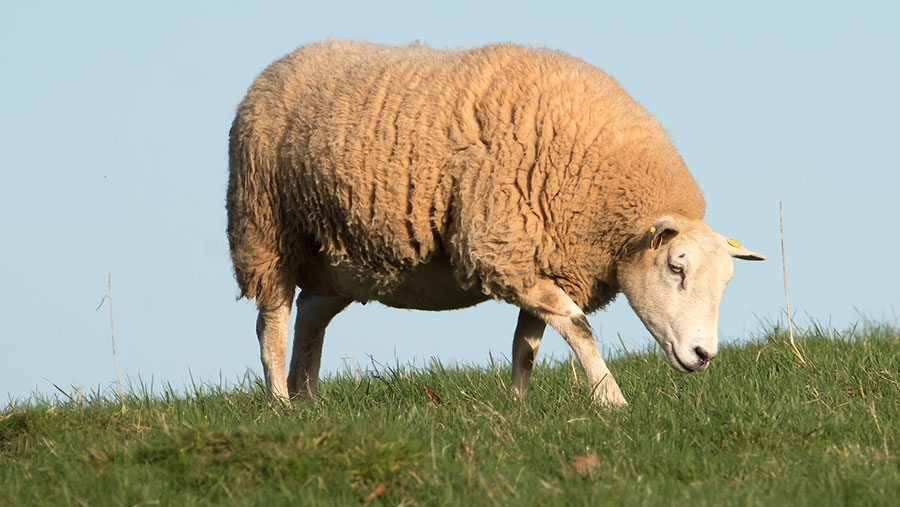Vet Viewpoint: Sheep lameness, abortion and fluke advice
 © Tim Scrivener
© Tim Scrivener This month’s Vet Viewpoint is largely focused on the sheep industry, with vets across the country seeing issues with fluke and lameness in flocks.
And Ross Wilson of Clyde Vet Group in Lanarkshire is preparing for talk of abortions as lambing time is kicking off.
He explains the precautions and actions farmers need to take if they are faced with a higher than normal level or cluster of abortions.
Sophia Elworthy from Torch Farm Vets in Devon is thinking for the future in the cattle business, with a look at the use of genomics in planning herd replacements and breeding decisions.
Rebecca Davenport
Farm Veterinary Solutions, Melton Mowbray, Leicestershire

Rebecca Davenport
Following on from another wet summer, we are seeing increasing cases of liver fluke across our flocks.
At this time of year, chronic cases present with weight loss, reduced appetite, poor fleece condition and anaemia, but lower levels of the parasite can contribute to poor scanning percentages, higher barren rates and reduced colostrum quality in lambing ewes.
Monitoring yearly for the presence of infection acquired during the autumn is really important even if previously clear.
Faecal samples from 10 sheep per management group can be submitted for liver fluke investigation. Abattoir reports on condemned livers can also help identify if fluke is a problem in your flock.
Discuss with your vet appropriate anthelmintics to ensure treatment is effective and to reduce resistance.
See also: A guide to managing fluke on your sheep farm
Sam Ecroyd
Tyndale Vets, Dursley, Gloucestershire

Sam Ecroyd
The old enemy of the sheep flock – lameness – has been a common subject of discussion within the practice recently.
We’ve seen an increase in contagious ovine digital dermatitis (Codd) alongside the usual foot-rot this year.
Lame sheep suffer severe discomfort, affecting welfare and starting a cascade of a producer’s worst nightmares; reduced feed intake, reduced growth, reduced milk production and reduced fertility.
Estimates by Reading University place the cost of a 10% level of lameness (the UK average) at £1,416 per 100 ewes over a year – a considerable sum to be losing.
Prompt identification and correct treatment are essential in reducing lameness. Speak to your vet about the correct treatment of Codd as some common antibiotics may not be effective.
Don’t forget the benefit of anti-inflammatories in relieving pain and speeding up recovery.
Ross Wilson
Clyde Vet Group, Lanark, Lanarkshire

Ross Wilson
Every year, as lambing approaches, we are faced with abortions being reported across the practice.
A small number of abortions (less than 2%) are to be expected, but any more than this, or a cluster of abortions should always be investigated.
There are many potential causes of sheep abortion and your vet can help you come up with a solution. Here are some simple guidelines to follow to help investigate what’s causing the problem:
- Isolate and identify aborted ewes
- Submit any aborted lambs and placenta to your local lab as soon as possible
- Ask your vet to blood sample barren ewes for infectious causes.
Remember, many of the organisms involved are zoonotic and can be transmitted to humans. Please be especially careful when handling aborted products and aborted ewes.
Sophia Elworthy
Torch Farm Vets, Barnstaple Devon

Sophia Elworthy
Genomics – why just look at the bulls, don’t forget the heifers.
With autumn calvers largely finishing calving and heifer calves on the ground, it is important to consider breeding decisions for the future of the herd.
Many breeding catalogues have very young genomic bulls advertised, so how can you look at these in comparison to a proven sire and how reliable are they?
Genomic evaluations carry a reliability of about 70% and with a proven £PLI (profitable lifetime index), a bull would need to wait until he is at least five years old to achieve this reliability.
We can understand the genetic potential of your heifers by the genomic testing of a plucked hair.
Analysing your heifers along with your selected bulls in conjunction with your vet and breeding consultant completes your breeding decisions for your future needs.
